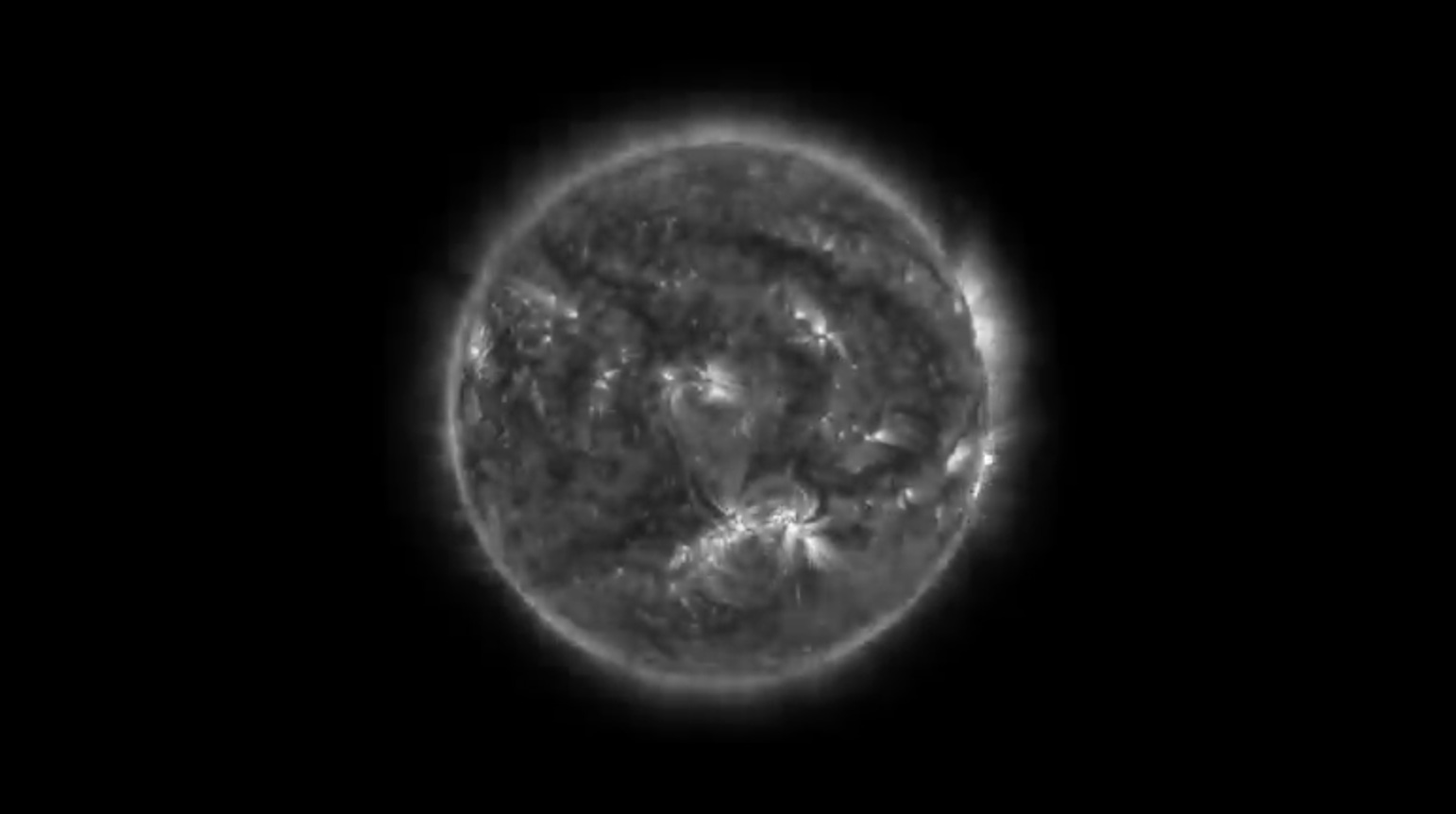
Image of Sun’s southern pole: Image courtesy of NASA/ESA
A recent image exposure taken by ESA/NASA Solar Orbiter spacecraft on March 30th, 2022 has just been released from when the spacecraft approached its closest distance to the Sun yet.
Utilizing its onboard imaging system, Extreme Ultraviolet Imager (EUI), the camera was able to snap this stunning maelstrom of magnetic activity.
Download the full resolution file, here.
Massive magnetic fields create these moving active regions on the Sun which get swept to the star’s poles before being engulfed back down into the Sun, forming even more magnetic activity to be expelled. In the image, we can see the lightest parts of the image which feature these magnetic loops rising and falling backwards into the star. The darker portions of the image are open regions of escaping gasses furling outwards into space creating aggressive solar winds.

Solar Magnetivity Model: video courtesy of ESA
https://dlmultimedia.esa.int/download/public/videos/2021/12/019/2112_019_AR_EN.mp4
Starting in 2025, Solar Orbiter will maneuver to use the gravitational pull of Venus to increase the inclination of its orbit which will eventually provide a more top-down view of this activity on the solar pole. Scientists hope to use this data to uncover more of the long-held secrets regarding the Sun’s magnetic activity and how it exerts its influence on the surrounding space.
Learn more about Solar Orbiter, here.
More on ESA’s Solar Magnetic Activity tasks, here.